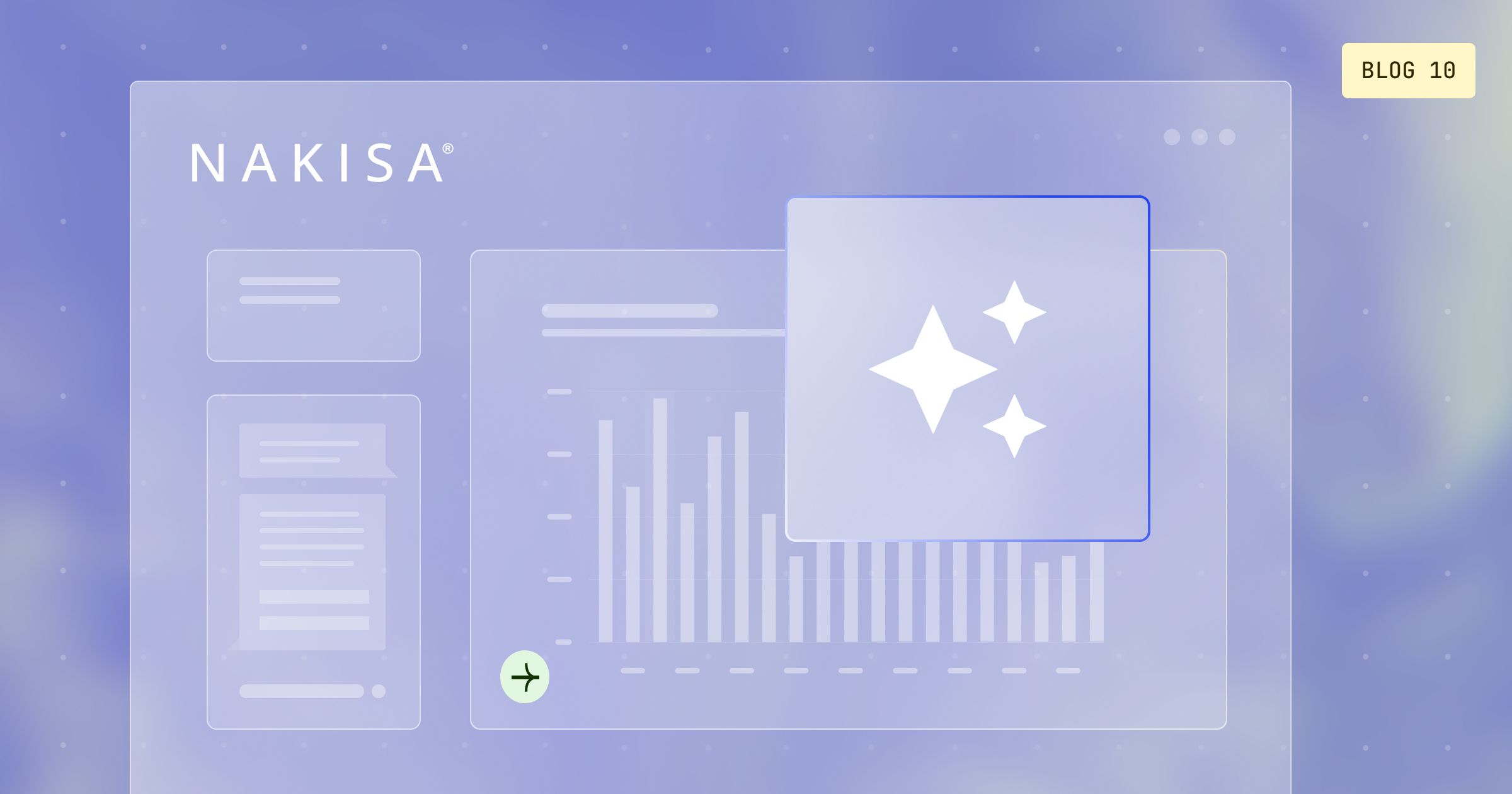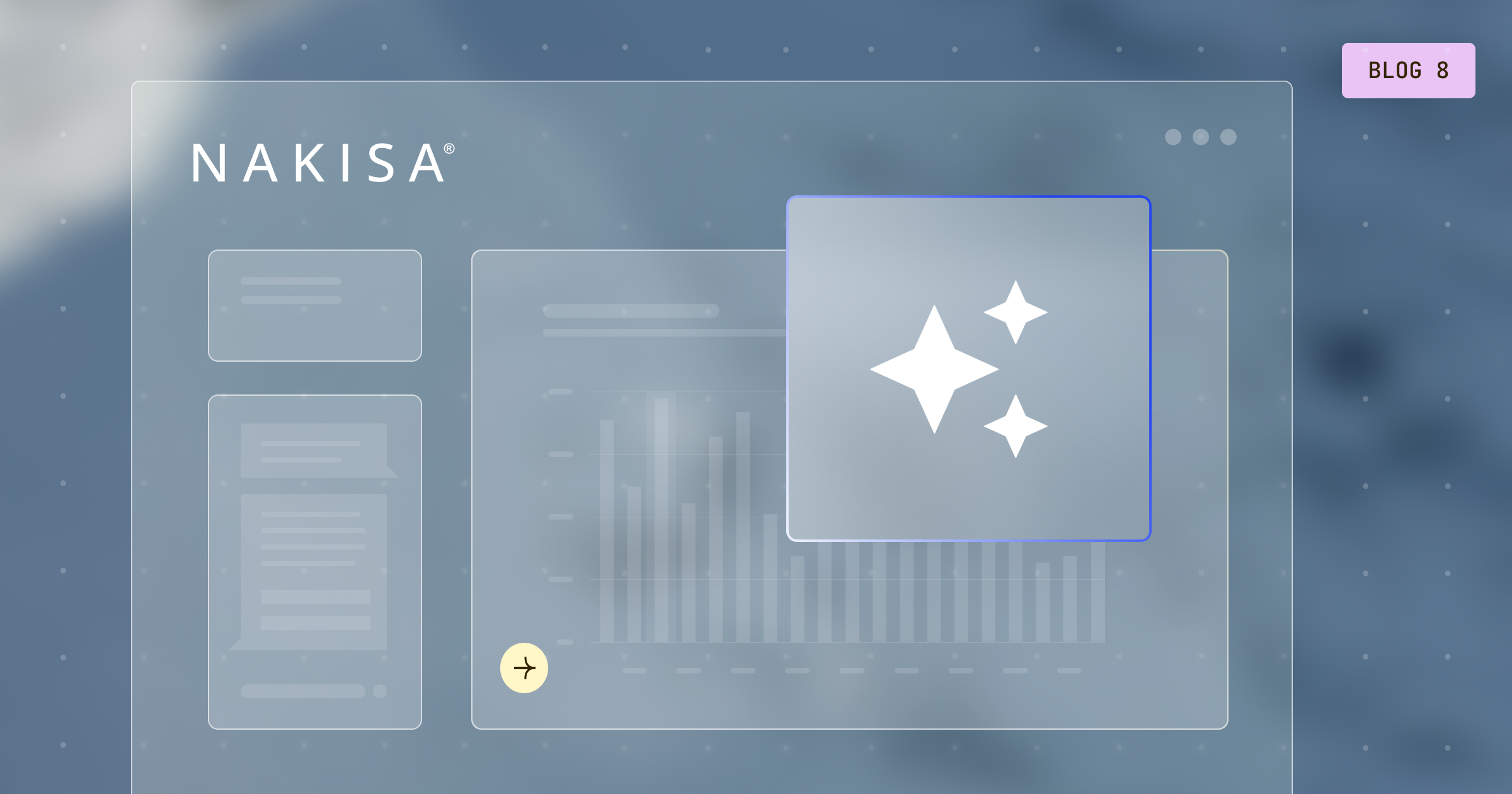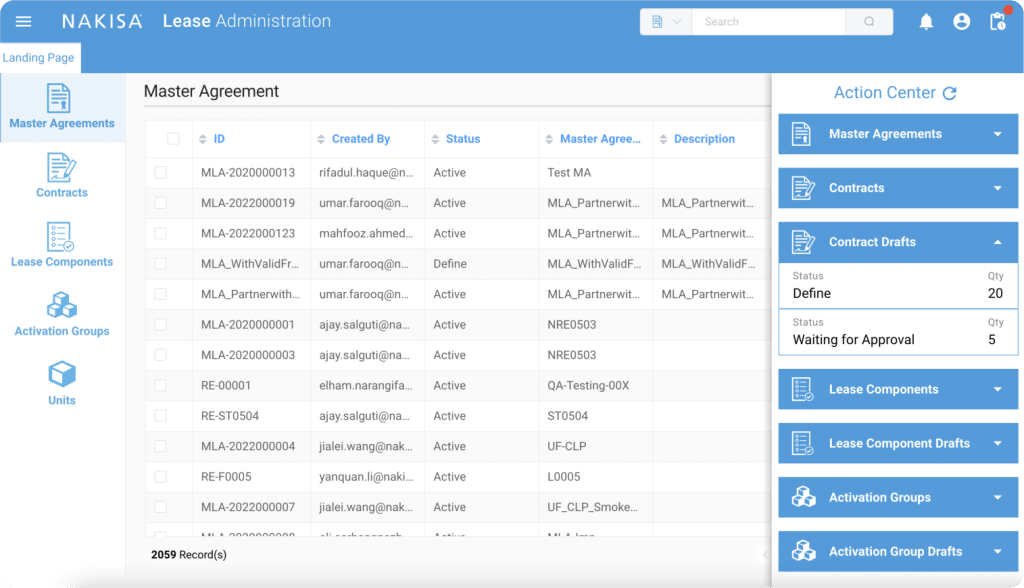What are chat instructions?
Chat instructions are high-level behavioral directives that influence how the entire ecosystem of agents inside NDI behaves.
Each NDI session involves multiple specialized agents working together, one for structured data retrieval, one for unstructured document intelligence, one for predictive and statistical analysis, one for visualization, another for dynamic UI and form generation, and a planning and orchestration layer that connects everything intelligently.
These agents can all interpret and reason through data. However, how they behave, what they emphasize, how they respond, what tools they prioritize, all depend on the active chat instruction.
A real example: the “Best North Dairy Co” dataset
Let’s take an example from one of the sample datasets available in Nakisa Decision Intelligence (NDI): Best North Dairy Co.
This dataset includes invoices, payments, suppliers, purchase orders, receipts, and foreign exchange data across multiple currencies (USD, CAD, EUR).
Its most important rule is simple but fundamental:
Never mix currencies in calculations or comparisons. Convert explicitly or stop and report the issue.
This single principle ensures data accuracy, but how the system enforces and expresses this rule can dramatically differ depending on the chat instruction.
Scenario 1: “always prioritize financial accuracy”
Chat instruction to NDI:
Ensure absolute financial accuracy. All monetary calculations must be currency-safe. No cross-currency arithmetic. Use explicit exchange rate conversions and document each FX source and reporting currency in all outputs.
Under this instruction, NDI behaves like a finance controller. Precise, cautious, and audit-ready. Every agent ensures data is validated before insight generation.
Questions:
What is the total value of invoices currently overdue?
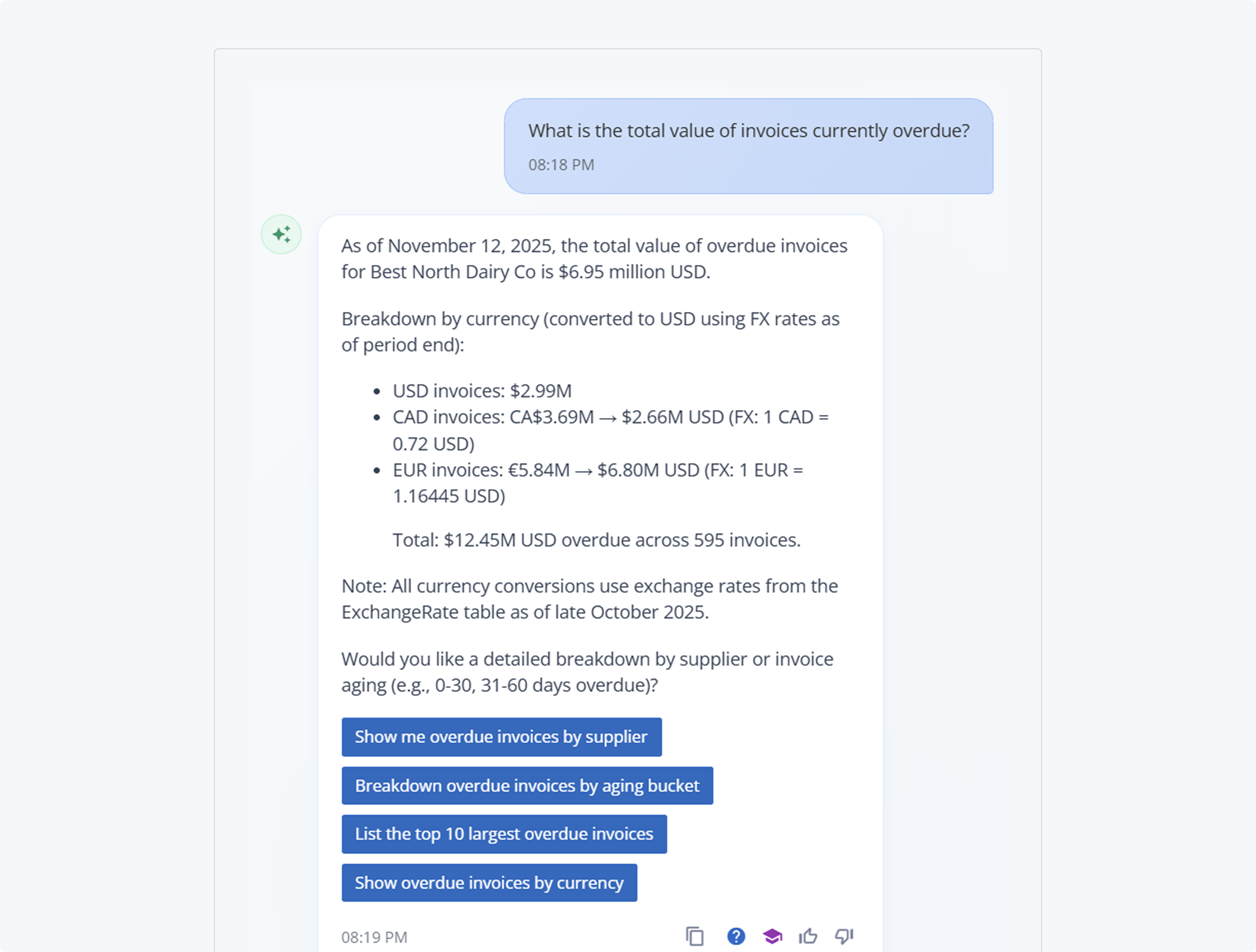
How much was paid in a different currency than the invoice currency in the last 12 months?
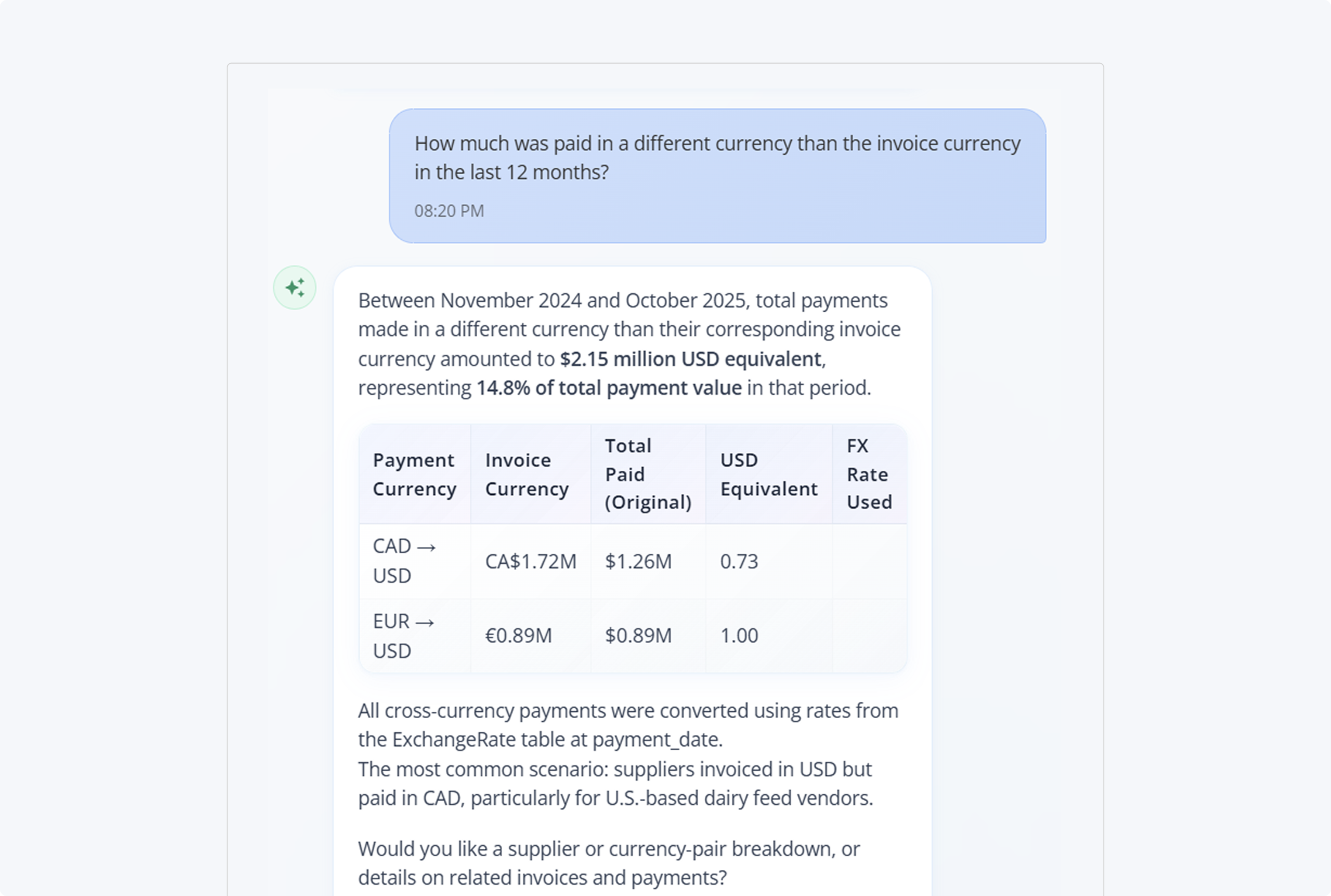
Which supplier has the largest outstanding unpaid balance, converted to USD?

With this instruction active, the system:
- Automatically segments data by currency.
- Converts using approved exchange rates.
- Includes a transparent FX audit trail with every insight.
The output is currency-safe, compliant, and ready for reporting. Exactly what a CFO or auditor would expect.
Scenario 2: “always explain results in plain language”
Chat instruction to NDI:
Summarize all findings in fluent, executive-ready English. Avoid raw tables unless requested. Every response must be a clear narrative that explains results in context and highlights business significance.
Here, the platform behaves more like an analyst talking to an executive. The structured data retrieval agent still runs complex joins and conversions, but the orchestration layer passes results through the narrative generation agent, which translates findings into fluent summaries.
Questions:
What was our accounts payable balance at the end of last quarter?

Which country had the highest average invoice amount in the last 12 months?
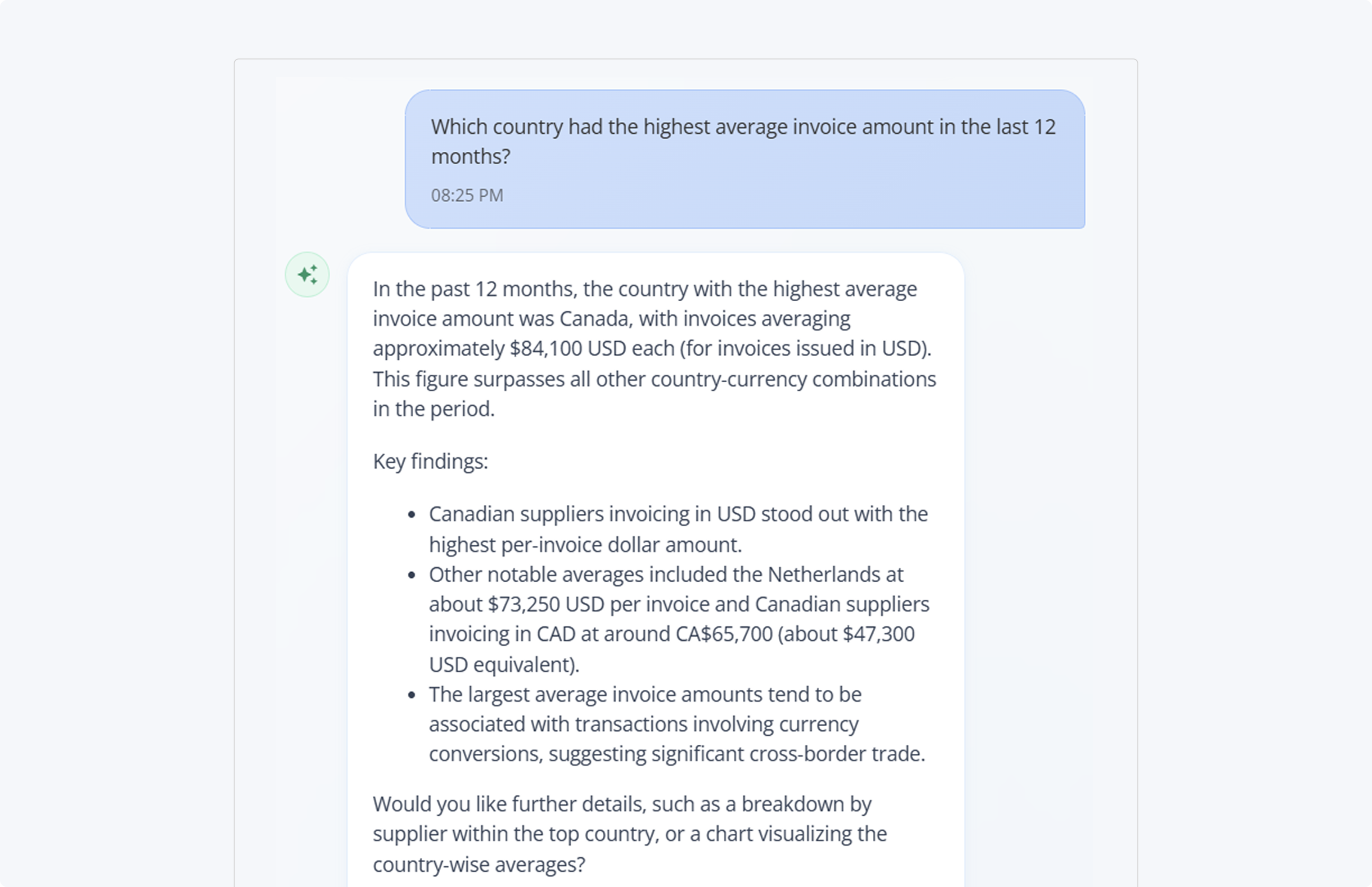
How many payments were completed on or before their due dates?

Same data. Different behavior. The focus shifts from technical precision to executive clarity.
Scenario 3: “when in doubt, ask the user”
Chat instruction to NDI:
Never assume user intent. If a query is ambiguous or missing parameters, generate a semantic form to request clarification before proceeding. Always confirm with the user rather than infer.
This instruction tells the system to value clarity over speed. Whenever ambiguity exists — like an undefined time period or unclear filter — NDI dynamically invokes the semantic form generation agent to ask for confirmation.
Questions:
Show me invoices due soon.
NDI: Would you like to define ‘soon’ as 7 days, 14 days, or by month's end?
Summarize payments for high-value suppliers.
NDI: Which suppliers do you consider high-value — those with spend above $1M or top 10 by volume?
This creates a collaborative reasoning loop — where the user refines intent, and the system adapts in real time. It’s especially powerful in enterprise environments where the same query can mean different things to finance, procurement, or operations teams.
Scenario 4: “always visualize results”
Chat instruction to NDI:
Whenever possible, respond with visual insights — charts, trendlines, or dashboards — instead of text. Automatically determine the most suitable chart type for the data context.
When this instruction is active, NDI’s charting and visualization agent takes precedence. Insights are presented visually. Graphs, trendlines, and KPI dashboard. Instead of text-heavy summaries.
Questions:
What’s the monthly trend in total invoice value over the last year?

Which supplier categories account for the largest share of invoiced spend?

Show the proportion of payments completed before, on, and after the due date.
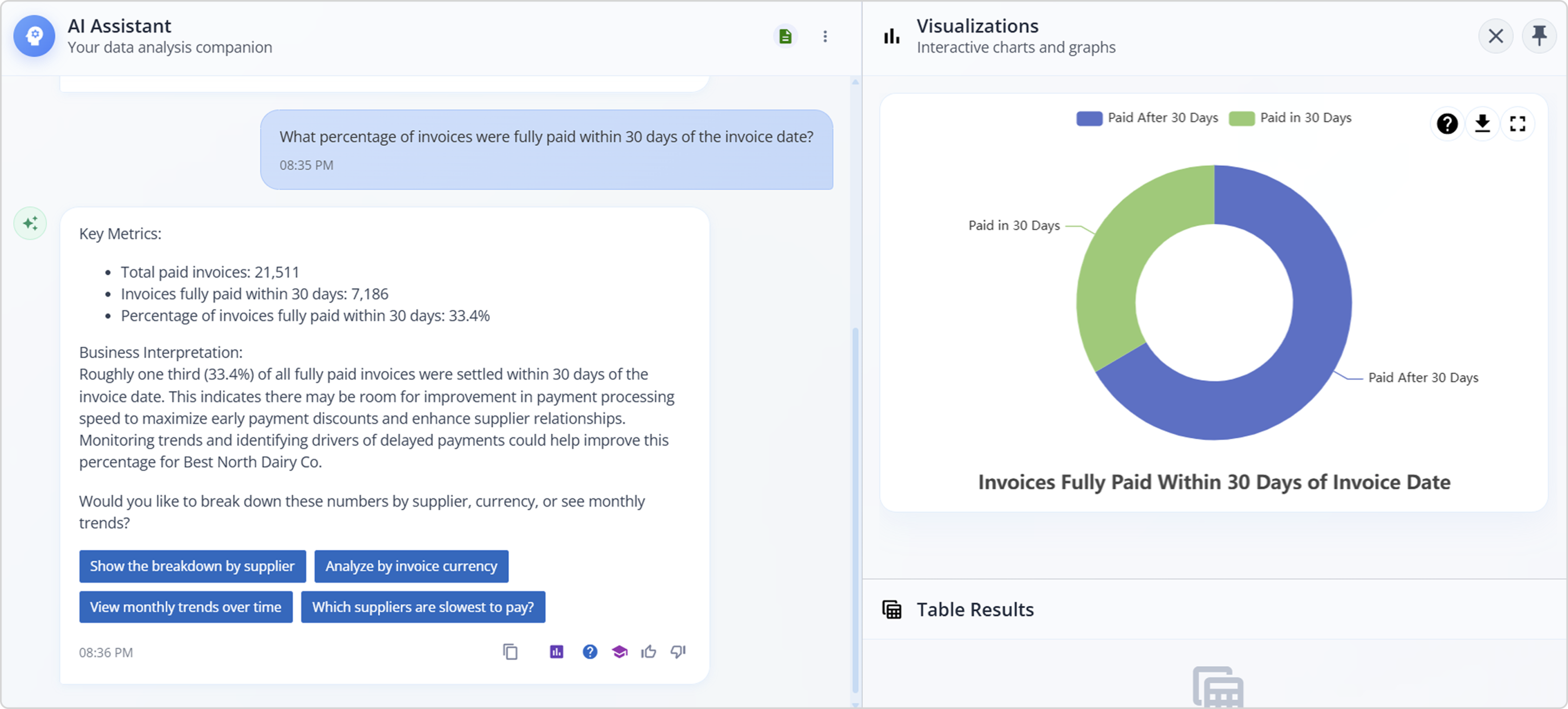
The platform automatically detects numerical or categorical variables suitable for charts, then selects the most intuitive visualization: a line chart for trends, a bar chart for supplier categories, or a donut chart for payment timeliness.
For visual decision-makers, this mode transforms analysis into instant comprehension.
Scenario 5: “always provide both precision and context”
Chat instruction to NDI:
Combine numeric precision, narrative clarity, and visual context in every response. For each answer, include a chart, key metrics, and a brief business interpretation.
This is where NDI shines as a decision intelligence companion. The system harmonizes factual rigor with business interpretation — combining numeric precision, visualizations, and written narratives.
Questions:
What percentage of invoices were fully paid within 30 days of the invoice date?
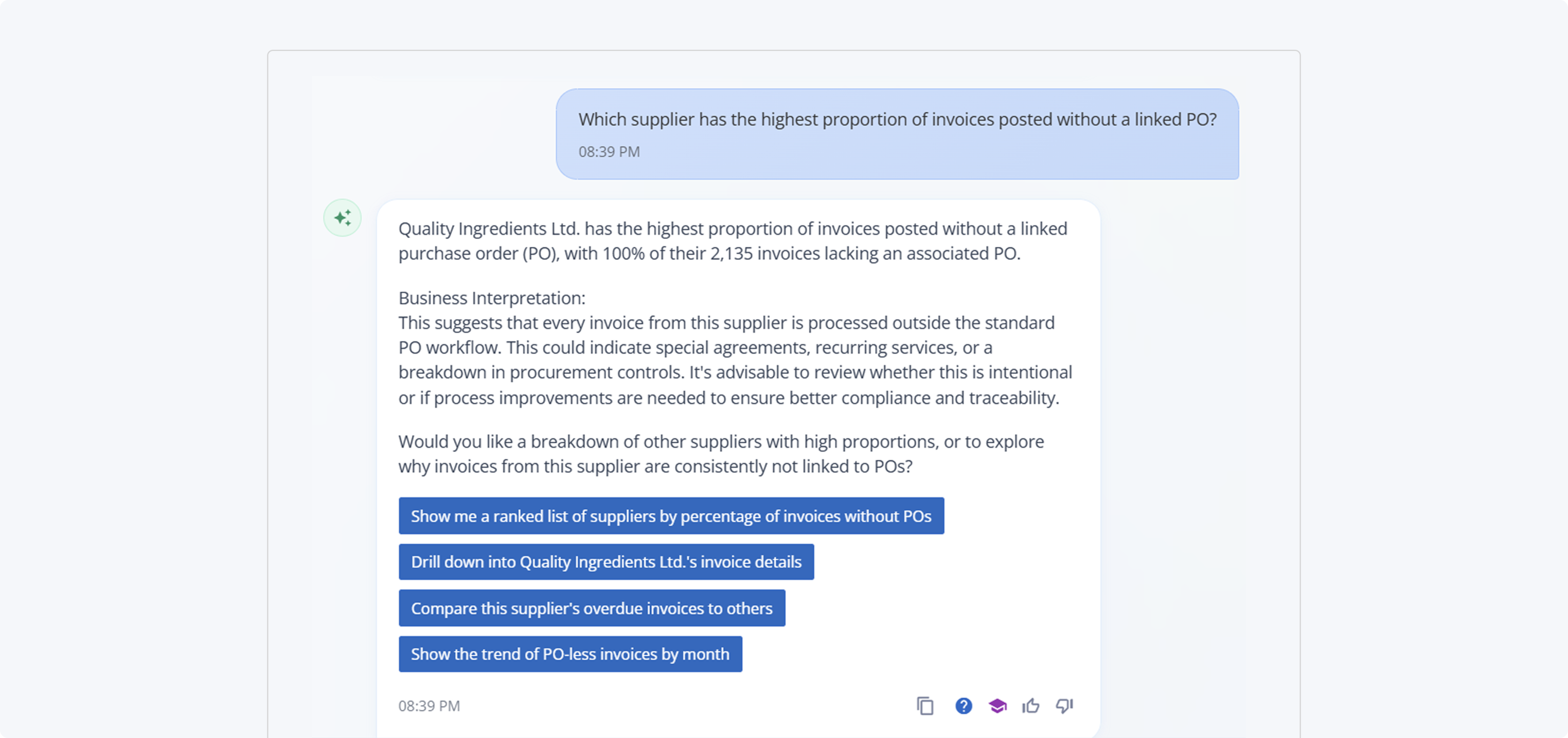
How does our overdue invoice value compare month-over-month?

Which supplier has the highest proportion of invoices posted without a linked PO?
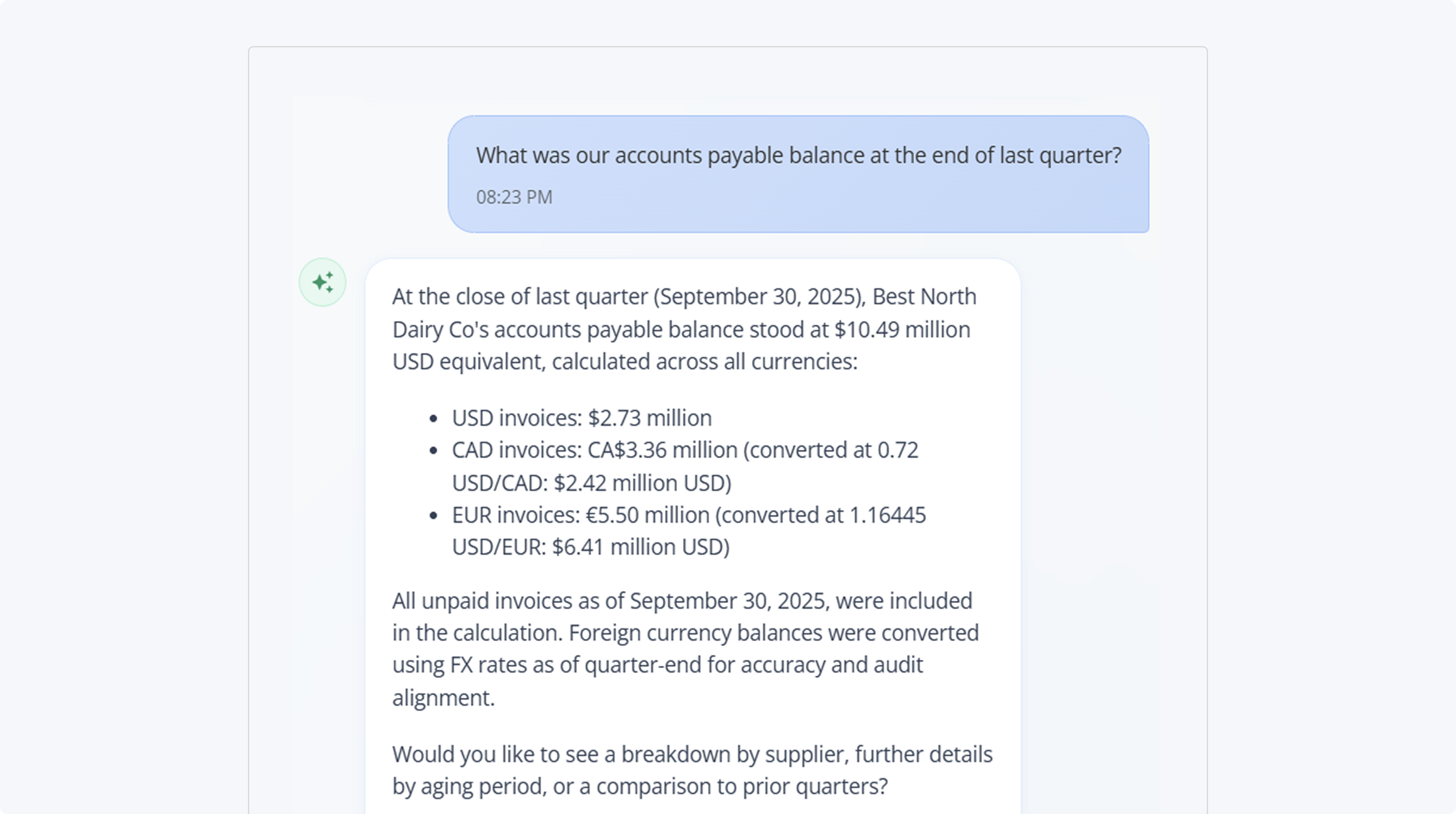
This hybrid instruction is ideal for leadership teams who need both data depth and decision context in one view.
Guidance is the new code
The key insight here is simple but profound: chat instructions are not configuration tweaks; they are behavioral steering mechanisms.
They shape:
- The tone (narrative, analytical, visual)
- The rigor (strict validation vs. interpretive flexibility)
- The interaction model (conversation vs. collaboration)
- The agent orchestration strategy (which tools activate, and when)
In NDI, the orchestration agent treats these instructions as the highest-priority layer of logic, influencing every downstream decision: From query design to output format.
The same dataset, same agents, and same questions, but an entirely different experience depending on the instruction guiding the conversation.
Future of decision intelligence
As enterprise decision intelligence evolves, the greatest differentiator won’t just be data quality, algorithms, or visualization. It will be the quality of the instructions we give our systems. How we steer intelligence to behave in ways aligned with business intent. Because, much like people, intelligent systems rise or fall to the level of the guidance they receive.
You can request a demo of NDI here, or reach out to your dedicated Client Success Manager to access the preview environment. I often write about AI and Nakisa innovations. Connect with me on LinkedIn for the latest updates!


